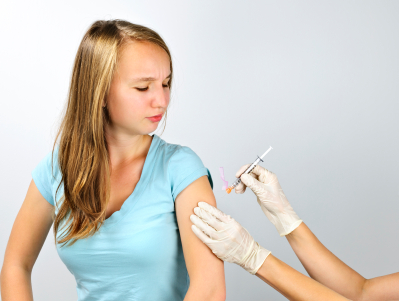 The January 2013 release of the Annual Report to the Nation on the Status of Cancer shows that the incidence of cancer over all is down slightly, but the report details a troubling spike in HPV-related oral cancers.
The January 2013 release of the Annual Report to the Nation on the Status of Cancer shows that the incidence of cancer over all is down slightly, but the report details a troubling spike in HPV-related oral cancers.
HPV, or human papillomavirus, is the most common sexually transmitted virus, infecting more than half of all those who are sexually active. Most HPV infections never result in anything clinically relevant, since the virus is cleared from the body without incident in the majority of those who contract it. But others with HPV infection can develop warts or, more seriously, HPV-related cancers, including cancers of the head and neck and of the cervix.
HPV attacks by infecting the cells of the skin and the cells that line the cervix, mouth and anus. The virus takes control of the infected cells, and this can cause genital warts relatively soon after exposure—or cancer after years of initial exposure. The best defense against HPV is a vaccine given to adolescents before they become sexually active.
Research has shown that there are effective vaccines for the two strains of HPV that are more virulent and are associated with most HPV-related cancers. The Centers for Disease Control and Prevention has deemed these vaccines safe when given as directed. “Safe” means that the side effects are considered minor across a large population set.
How do we know that the vaccines are safe and effective? First, each vaccine is made from viral proteins only (no DNA), which means that these are not “live attenuated” viruses; the recipient cannot become infected, contract warts or develop cancer from the vaccine. Tens of millions of vaccine doses have been administered and worldwide experience has revealed no safety concerns. There is sound evidence that vaccination protects people from infection with the HPV types that can cause cancer. One of the vaccines (quadrivalent) protects against infection by two additional HPV strains (meaning it addresses four types of HPV); with this vaccine, there is clear evidence of reduction of warts.
The vaccine is recommended for girls and boys beginning at age 11 or 12. It was first recommended for girls, and then the recommendation was extended to boys. Many experts believe that the vaccine should be given to younger children, as is done with other vaccines given in childhood to protect against viral infections such as measles, mumps and rubella. Studies have already been done that show the vaccine works in children as young as age 9, and more research is currently being conducted to determine if the vaccine will be effective in younger children.
Yet the United States lags behind the United Kingdom and Australia in full compliance with the vaccine regimen. Strikingly, only about one-third of U.S. adolescent girls and even fewer adolescent boys are being fully vaccinated. This is disturbing, given the HPV cancer risk. We clearly have not done a good job of explaining to parents that this cancer-preventing vaccine is a safe and effective way to protect our children from a virus that can cause cancer later in life.
There are other barriers to effective coverage. Full protection requires three vaccine doses over six months. Healthcare providers need to remind parents that getting all three doses is important for developing the best immunity against HPV. Cost is less of a factor in the United States, but that issue must be examined globally. In the U.S., most of the cost of the HPV vaccine is covered, including under the Vaccines for Children program for low-income families; however, parents of children with no coverage or limited coverage may consider burdensome the approximate $400 cost of the three-dose vaccine regimen. Additionally, on a global level a significant number will never be able to afford the vaccine. The vaccine needs to be made available to all children. Certainly from a health economics point of view, the cost of the vaccine is far lower than the cost of treating cancer.
Adults over the age of 26 who are concerned about HPV exposure should talk to their doctors about cancer risk factors. In this adult group, more study is needed. But for adolescents, we know that the most effective way to protect children from the potential lifelong dangers of HPV infection is to encourage parents to make sure that their children receive the full three-dose HPV vaccination. Getting vaccinated at a young age can prevent HPV-driven cancers that can occur many years after initial infection.
To learn more about HPV-related oral cancer watch this video.


Comments on this entry are closed.
One of the barriers to HPV vaccination that I have been encountering has to do with the nature of HPV acquisition and the message that vaccination could potentially send to children. Specifically, since HPV is a sexually transmitted virus, some parents worry that vaccinating their children gives their children a license to be sexually active or promiscuous. I have encountered this idea over an over again coming from people of many different religious and socioeconomic backgrounds. I am curious to know whether this attitude plays a significant part in the poor job we are doing as a country at vaccinating our children and whether it will be addressed better by primary care providers in the future.
I agree with your analysis. Cancer prevention is the reason to get children vaccinated. Providers must emphasize cancer prevention not mode of transmission.